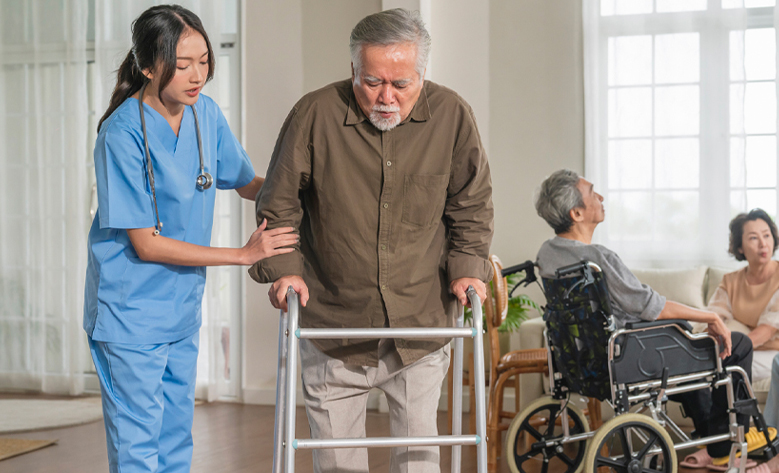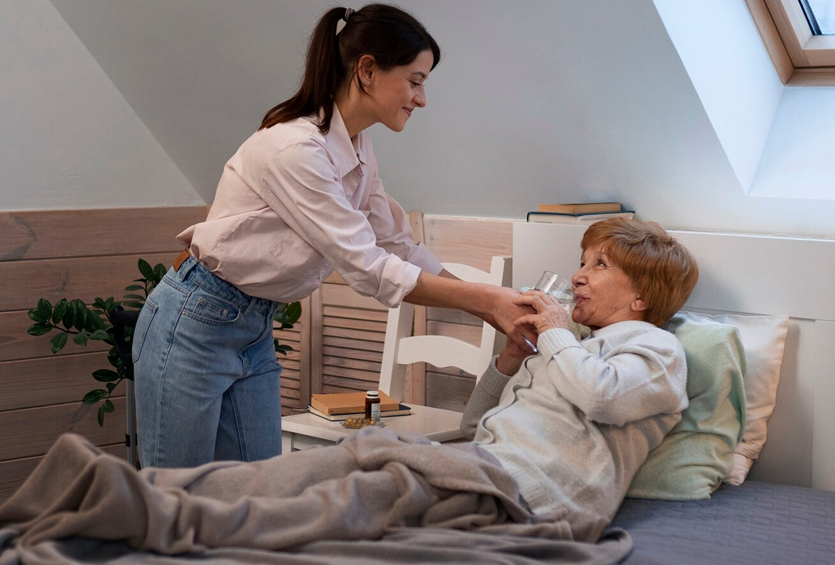Safe Transfer Techniques for Caregivers. Preventing Injuries at Home
Don’t Let a Simple Move Turn into a Serious Injury
It only takes one wrong move to injure both the patient and the caregiver. Transferring patients with limited mobility can be risky if not done correctly, leading to falls, sprains, or chronic pain. As a caregiver, understanding the proper techniques for safe transfer is not just helpful—it’s essential.
At Abba Health Services, our goal is to equip caregivers with the right training and tools to make home care safer, easier, and more compassionate.
Start with the Basics: Why Safe Transfers Matter
Improper transfer techniques can strain the caregiver’s back, arms, and shoulders, while also putting the patient at risk of injury or fear. Safe transfers build trust, confidence, and physical stability.
Why it matters:
-
Prevents falls and skin injuries like bedsores.
-
Reduces caregiver fatigue and injury.
-
Builds a safer home care environment.
Learn more about our caregiver training support and in-home care options tailored for different mobility levels.
Assess Before You Move: Every Patient Is Different
Assuming all patients need the same transfer approach can be a dangerous mistake. Some patients may be partially mobile, while others may need total assistance.
What can go wrong:
-
Forcing a transfer when the patient isn’t ready.
-
Not considering mental confusion or dementia.
-
Underestimating body weight or strength required.
Before transferring, always assess:
-
The patient’s ability to bear weight.
-
Any recent surgeries or injuries.
-
Level of alertness or confusion.
👉 Read Mayo Clinic’s safe lifting guidelines for caregivers.

Equipment Is Your Best Friend: Use Assistive Devices When Needed
You don’t have to do it alone. Many caregivers skip transfer aids, thinking they’re cumbersome, but devices like gait belts or slide sheets significantly reduce strain and increase safety.
✅ Helpful tools include:
-
Gait Belts – for steady support when lifting.
-
Slide Boards – for bed-to-chair transfers.
-
Hoyer Lifts – for total immobility.
Using the right equipment can also improve the patient’s comfort and preserve their dignity—both crucial in long-term care. We provide equipment consultation services for home setups.
Proper Technique Over Brute Strength: Use Your Body Smartly
You may feel like helping faster by lifting forcefully, but that’s a quick route to injury. Caregivers must rely on technique rather than strength when assisting patients.
💡 Golden Rules for Body Mechanics:
-
Bend at the knees, not your waist.
-
Keep your back straight and patient close.
-
Avoid twisting your spine while lifting.
-
Count or signal before moving.
Practicing proper form can prevent serious injuries like lumbar strain. Always make transfers smooth, slow, and well-coordinated.
Communication Is Key: Talk to the Patient Before Every Move
Many caregivers make the mistake of lifting a patient without warning. This not only frightens the patient but can also cause panic or sudden movement, making the transfer unsafe.
🗣️ Before any transfer:
-
Explain what you’re about to do.
-
Ask for the patient’s help if they’re able.
-
Count “1-2-3” aloud before lifting.
Patients who feel included are more likely to cooperate and stay calm during transfers. At Abba Health Services, we train our caregivers in effective patient communication for every type of condition.
Know When to Ask for Help: Don’t Try to Do It Alone
One of the most dangerous assumptions caregivers make is that they can handle every transfer solo. Even if you’ve done it before, certain transfers—especially from the floor or with bariatric patients—require more than one set of hands.
⚠️ Red flags you need help:
-
Patient is non-weight-bearing.
-
Patient becomes combative or confused mid-transfer.
-
There’s no assistive equipment available.
Whether it’s another caregiver or a family member, extra help can make all the difference. If you’re frequently alone, consider professional staffing support from Abba Health.
Build Strength and Prevent Fatigue: Take Care of Yourself Too
Burnout and body strain are common in caregiving. If you’re always tired, every transfer becomes riskier. Maintaining your own strength and flexibility ensures you’re able to provide the best care possible.
✅ Self-care tips for caregivers:
-
Stretch daily to reduce muscle tension.
-
Use lifting aids consistently.
-
Take breaks during long shifts.
-
Stay hydrated and eat well.
Explore our caregiver wellness blog for more strategies on staying physically and emotionally healthy while delivering care.
Practice Makes Perfect: Consistent Technique Leads to Confidence
You won’t master every transfer in one day—but regular practice builds confidence. Whether you’re helping someone into a car or shifting them from bed to wheelchair, consistency is what ensures safety and comfort.
✅ Try this:
-
Rehearse each type of transfer (with supervision if possible).
-
Ask for feedback from professionals.
-
Watch video tutorials from AARP’s caregiving resource hub.
Remember, your goal is to move the patient—not their fear, discomfort, or independence. Every transfer is a chance to affirm their dignity.
Conclusion: Safe Transfers Are the Heartbeat of Quality Home Care
Being a caregiver isn’t just about compassion—it’s also about competence. The way you move, lift, and support a patient can shape their confidence, comfort, and even recovery. Safe transfers protect both parties and create a more empowering home care experience.
At Abba Health Services, we provide hands-on training, assistive equipment guidance, and ongoing caregiver support so you never have to figure it out alone.
📞 Contact Us
Phone: 678-885-7229
Address: 2470 Windy Hill Road, Suite 300, Marietta, Georgia 30067
Email: [email protected]
Visit Us at Our Atlanta Office
We are proudly serving families in Marietta and the greater Atlanta area. Find us at:



